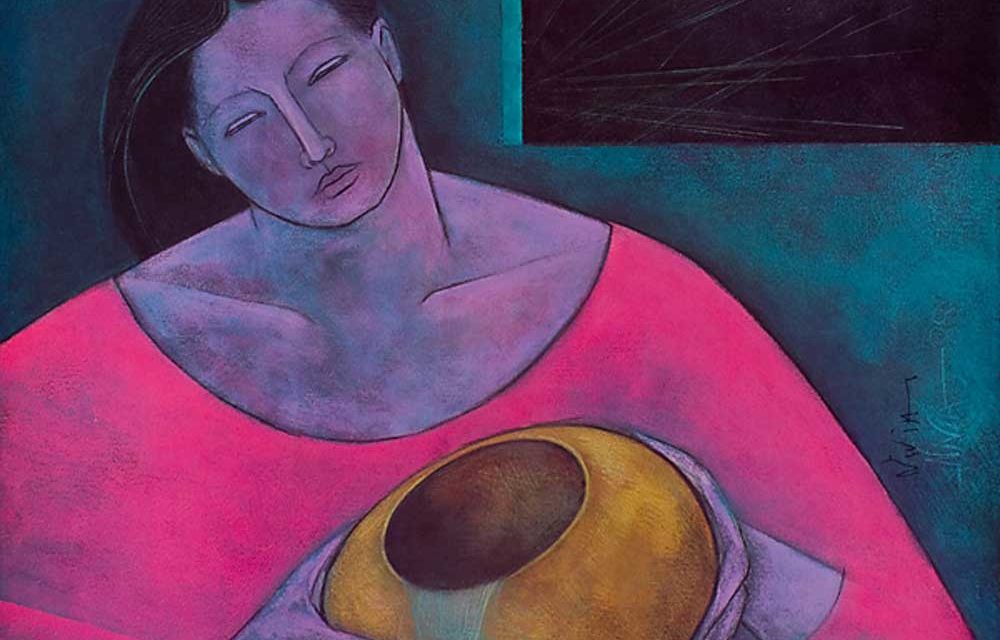In 1988 while working as a student intern at Trinity University’s Tomas Rivera Center for Policy Studies (a new think tank, at that time), a striking woman entered the office. It was renowned San Antonio artist Nivia Gonzalez who had come to personally deliver some of her art that Dr Ricardo Romo had purchased.
What a thrill to meet a real artist. Administrative assistant Lupita Puentes and I talked with her as other workers gathered around to look at the serigraphs she brought with her. She told us one of the paintings was selected by Sandra Cisneros to grace the cover of her new book. It would become a runaway bestseller: The House on Mango Street.
Later that day in the office, I was overjoyed when Dr. Romo gave me one of the serigraphs as a graduation present for completing my bachelor’s degree. Everyone agreed, he had picked a winner. Dr. Romo didn’t have to do it, but that’s who he is; a truly kind and gracious person.
The piece features the Native American woman that appears in many of her paintings. She is a large, capable woman with eyes closed as if she’s meditating, finding her power in stillness and introspection. I don’t know how she did it, but the color in the painting actually has texture, and the shapes are outlined in strong black lines (like Hans Hoffman) that exude strength.
Although I worked at the TRC just 10 hrs/week as a student, I’m so glad I was there on that day. I will never forget it.
Nivia Gonzalez was a natural genius. She had her first solo exhibition at the Witte Museum when she was just 17 years old. Propelled by enormous talent, she forged her own path as an artist. As director of the Bexar County Jail Arts Program, one of her most widely lauded achievements was guiding talented inmates in painting the mural that served as a backdrop for Pope John Paul II during his 1987 visit to San Antonio. The Pope was said to have cried when he learned the mural was painted by inmates.
In later years Nivia Gonzalez would face major trials in life: a major car accident she barely survived, and the resulting poverty that resulted from not being able to paint for several years. But she eventually regained the use of her left hand (her painting hand–she was left handed) and restarted the next act of her career. A real life portrait in courage, she overcame it all to paint again and thereby ending the poverty she had fallen into. She even bought house through Habitat for Humanity San Antonio.
The Tomas Rivera Center Policy Institute is no longer at Trinity University, but is now located at USC. It was named for Dr. Tomas Rivera who had been Professor of Spanish Literature at Trinity University (where he was one of my father’s own professors in the 1950s). He went on to become an award-winning author and literary figure. Indeed, he also served as chancellor of the University of California, Riverside, the first Mexican-American to hold such a position at the University of California.
Why didn’t we take a photo that day? Perhaps our most miraculous days are like that, only amazing in retrospect as the years pass….









